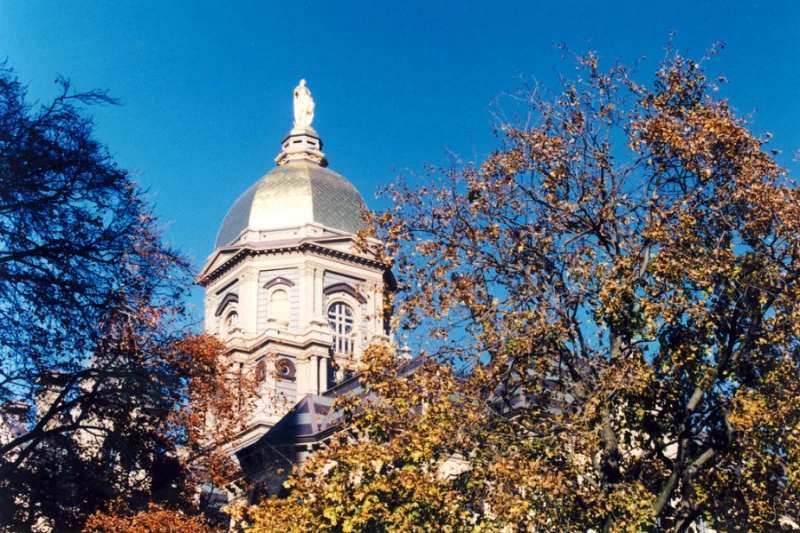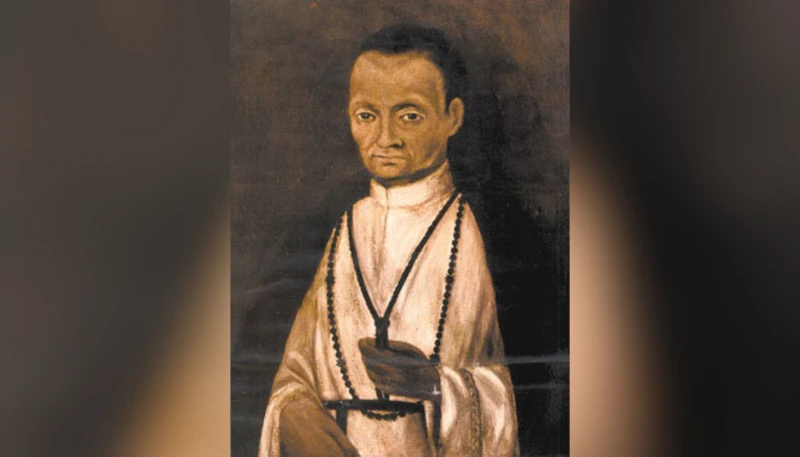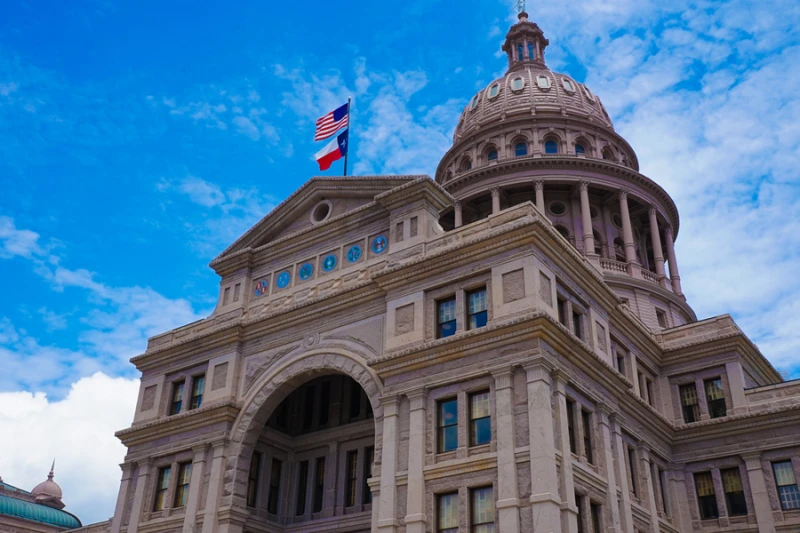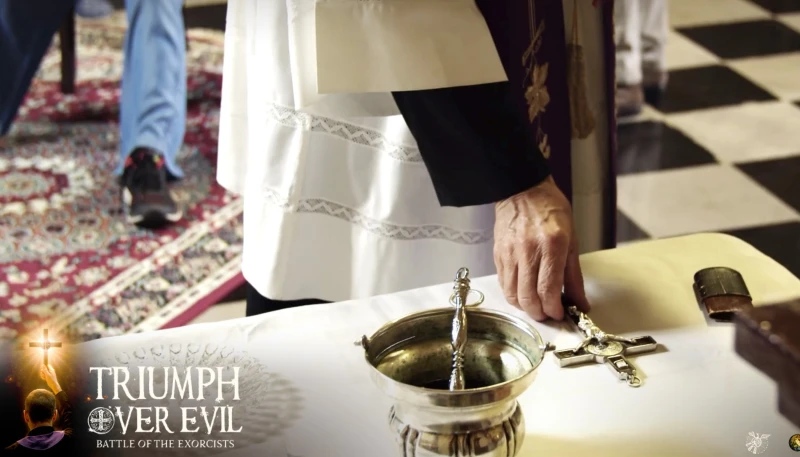 Daniel Ayalon, former Israeli ambassador to the U.S. and former foreign policy adviser to Prime Minister Benjamin Netanyahu, speaks with “EWTN News Nightly” anchor Veronica Dudo on Oct. 10, 2025. / Credit: “EWTN News Nightly”
Daniel Ayalon, former Israeli ambassador to the U.S. and former foreign policy adviser to Prime Minister Benjamin Netanyahu, speaks with “EWTN News Nightly” anchor Veronica Dudo on Oct. 10, 2025. / Credit: “EWTN News Nightly”
Washington, D.C. Newsroom, Oct 11, 2025 / 08:00 am (CNA).
Former Israeli government officials, representatives for the Latin Patriarchate of Jerusalem, and Catholic advocates for Israel in the U.S. spoke with EWTN News this week following the historic peace deal brokered by the Trump administration between Israel and Hamas.
News of the peace agreement came as “a joy for the entire population of Gaza, for the families of the hostages, and for our parish, our little parish there in Gaza,” according to Farid Jabran, the public and government affairs adviser for the Latin Patriarchate of Jerusalem.
In an Oct. 10 interview with “EWTN News Nightly,” Jabran noted there is still an air of “expectation” as the region waits to “see what happens.”
Jabran revealed that Latin Patriarch Cardinal Pierbattista Pizzaballa had spoken to the pastor of Gaza’s only Catholic Church, Father Gabriel Romanelli.
“They are all very happy that they are not hearing more bombings,” Jabran said of the Gazan parish community. “They expect a better future, but still they wait to see what is going to happen … They’re all waiting to see what happens after the release of the hostages.”
“The Catholic Church, as the patriarch, as the pope, as many said, will give anything in its power to to offer assistance, to offer good services when it’s asked to do so,” said Jabran, noting that the Latin Patriarchate has “big plans for Gaza,” including the construction of a new hospital in the southern region of the enclave.
“We’ll have more details on that that will be supported by the Italian Conference of Catholic Bishops and the Latin Patriarchate,” he revealed, adding: “We are planning to create field hospitals in several places and to work on schools and education for the children, not only for the Christian community [but] for everyone.”
Breaking down the peace deal
In an Oct. 10 appearance on “EWTN News Nightly,” Daniel Ayalon, former Israeli ambassador to the U.S. and former foreign policy adviser to Prime Minister Benjamin Netanyahu, shared how the historic peace deal brokered by the Trump administration will play out in the coming days.
Though both Israel and Hamas signed on to the first phase of the peace plan set out by the Trump administration on Wednesday, reports of ongoing bombardment from the IDF in northern Gaza was reported on Friday morning. Avalon explained that “there was a threat that the IDF depicted, and they had to take care of it.”
“We have enough experience with Hamas that even though they agree on a ceasefire, they continue their aggression,” he told “EWTN News Nightly” anchor Veronica Dudo. “But we adhere, or Israel adheres to the agreement and to the ceasefire terms … We started right on time, and we are now back off the former position, and hopefully we will see our hostages within the next 72 hours.”
President Donald Trump announced on Truth Social on Wednesday that both parties had agreed to the first phase of his 20-point peace plan for the Middle East, in which he noted: “ALL of the hostages will be released very soon, and Israel will withdraw their troops to an agreed-upon line as the first steps toward a strong, durable, and everlasting peace.”
“I think that we should all acknowledge the leadership and the negotiation capabilities of President Trump and his team,” Ayalon said. “I believe that they found the right moment to really bring together an assembly of protagonists in the region that could really be instrumental, namely, Turkey, Qatar, and Egypt, that put a lot of pressure on Hamas that was not there before.”
Given that the first phase goes according to plan, Ayalon said, Israel will release its Palestinian prisoners, and IDF troops will continue to withdraw, allowing Gazans to return to their homes. After which, he said, comes the precarious task of disarming Hamas, which will include dismantling its vast network of tunnels. This task, he predicted, could take several months.
“I think the people of Gaza deserve this,” Ayalon reflected. “After these two horrendous years … they were actually held hostage by Hamas, which used them as cannon fodder or as human shields.” The former ambassador further expressed hope that Gazans ensure “no more terror organizations will grow there to a monstrous dimension, as we did with Hamas.”
Looking ahead, Ayalon expressed hope for a broader normalization of relations between Israel and its Arab neighbors, such as Saudi Arabia and others, as well as other major Islamic countries such as Indonesia or Pakistan, to take place alongside reconstruction. He also floated the start of “a political process with the Palestinians,” noting Hamas will no longer govern the enclave. “It probably will be the Palestinian Authority,” he said, noting that under the agreement the governing body is mandated to promote peaceful coexistence and to “do away with terror” and indoctrination in its schools.
“Then we can talk about real peace between Israel and the Palestinians, which may be a cornerstone of a much broader peace with the region,” he said, adding: “And we all deserve it — the world deserves it, and I think it will be to the benefit and the prosperity of all here.”
Remembering Oct. 7
On the two-year anniversary of the Oct. 7, 2023, Hamas attacks on Israel, Philos Catholic Director Simone Rizkallah told CNA: “This is not a day to discuss U.S. foreign policy or to analyze political dynamics.”
Even with the Trump administration’s efforts in the background to make a peace deal between the Hamas terrorist group and Israel, Rizkallah emphasized, “Oct. 7 is a day to live out the beatitude ‘Blessed are they who mourn.’”
Philos Catholic is an arm of the U.S-based nonprofit organization, the Philos Project, which works to foster Catholic-Jewish relations.
Over 1,200 Israelis and 22 Americans were confirmed killed, and thousands more wounded in the wake of Hamas’ large-scale surprise attack on Israel. An additional 251 were taken hostage into the Gaza Strip.
“We mourn with the Jewish people and with Israel as if we are mourning for our own selves — because, in truth, we are,” she said. “To stand with our Jewish brothers and sisters today is not a political act, and it is certainly not a partisan one. The Church is not a political entity. This is about faith and the culture that faith gives birth to.”
According to Rizkhallah: “To speak up and stand with our Jewish friends is not sentimental — it is an act of spiritual realism and solidarity with our own people in the faith.” To do so, she continued, is not a partisan act but a “part of orthodox Catholic theology, rooted in the heart of the Church’s self-understanding.”
Catholics, she urged, should “incarnate this love by showing up in the flesh” for their Jewish friends and neighbors. “Call your Jewish friends,” she said. “Reach out to your local synagogue or Jewish community center. Drop off white roses in the wake of antisemitic attacks — a symbol of Christian resistance to hatred, inspired by the White Rose movement that opposed Nazi Germany.”
Philos Catholic will host an event commemorating the 60th anniversary of Nostra Aetate this year at the Saint John Paul II National Shrine in Washington, D.C., which will be available to attend both in person and virtually.
Read More
![Catholic advocates petition New York foundation to fund pensions, church preservation #Catholic
St. Joseph Cathedral, Buffalo, New York. / Credit: CiEll/Shutterstock
CNA Staff, Nov 20, 2025 / 10:40 am (CNA).
Advocates in New York state are petitioning a Catholic foundation there to help fund major pension shortages and church preservation efforts as well as to help support victims of clergy sex abuse.In a Nov. 13 letter to the Mother Cabrini Health Foundation in New York City, representatives of the group Save Our Buffalo Churches, sexual abuse victims, and pensioners of the former St. Clare’s Hospital asked the foundation to help the three communities with the “profound hardship” they are experiencing.Numerous parishes in Buffalo have been fighting diocesan-mandated closures and mergers over the past year. Hundreds of former workers of St. Clare’s, meanwhile, saw their pensions reduced or eliminated starting in 2018 due to major shortfalls. The hospital itself closed about a decade before.Abuse victims, meanwhile, have “been locked in a legal morass, denied the long-term healing resources and institutional acknowledgment of the harm they endured,” the letter said.The foundation arose in 2018 after the Diocese of Brooklyn sold the health insurer Fidelis Care. The organization, whose roughly $3.2 billion in assets came from that sale, is named after Mother Frances Xavier Cabrini, the first American recognized as a saint, who founded the Missionary Sisters of the Sacred Heart of Jesus.The letter noted that Cabrini “devoted her life to the people others overlooked,” including immigrants and the poor.“Guided by that legacy, we ask the foundation to explore emergency relief, stabilization funds, and community support initiatives” to help fund the three groups.The letter-writers asked for a meeting with foundation leaders “to explore potential pathways for assistance aligned with both the foundation’s mission and the pressing needs of survivors, pensioners, and parish communities.”Mary Pruski, who leads the Save Our Buffalo Churches group, told CNA that advocates in New York City would be following up with the foundation this week.“This is a complex project and will bring much peace and healing across [New York state],” she said.Pensioners with St. Clare’s Hospital are currently in the midst of a lawsuit brought by New York state against the Diocese of Albany for what the state attorney general’s office says was “[failure] to adequately fund, manage, and protect hospital employees’ hard-earned pensions.”The prosecutor’s office alleges that the diocese “[failed] to take adequate measures” to secure the pension fund, including “failing to make any annual contributions to the pension for all but two years from 2000 to 2019 and hiding the collapse of the pension plan from former hospital workers who were vested in the plan.”Parishioners in Buffalo, meanwhile, have challenged the diocesan parish merger and closure plan, with advocates securing a reprieve against the diocese at the state Supreme Court in July.The state high court ultimately tossed the lawsuit out in September, ruling that the court had no jurisdiction over the dispute.](https://unitedyam.com/wp-content/uploads/2025/11/catholic-advocates-petition-new-york-foundation-to-fund-pensions-church-preservation-catholic-st-joseph-cathedral-buffalo-new-york-credit-ciell-shutterstockcna-staff-nov-20-2025-10.webp)





![Religious sisters announce historic land return to Wisconsin Native American tribe #Catholic
LaCrosse, Wisconsin. / Credit: JTTucker/Shutterstock
CNA Staff, Nov 7, 2025 / 06:00 am (CNA).
A Wisconsin religious community says it has completed the first known instance of a Catholic group returning land to a Native American tribe, hailing it as a move made in the “spirit of relationship and healing.”The Franciscan Sisters of Perpetual Adoration announced the transfer in an Oct. 31 news release on its website. The community is located in La Crosse, Wisconsin, near the state’s border with Minnesota.The sisters had purchased the land from the Lac du Flambeau Band of the Lake Superior Chippewa tribe in 1966 and used the property for its Marywood Franciscan Spirituality Center.The sisters said they sold the property to the tribe for $30,000, the exact amount for which they paid for the land six decades ago. The modern sale price represented “just over 1% of [the land’s] current market value,” the sisters said.The bargain sale represents “the first known return of Catholic-owned land to a tribal nation as an act of repair for colonization and residential boarding schools,” the sisters said.“Today, the tribe’s reservation represents only a fraction of [its] traditional territories,” the news release said. “Rebuilding and protecting tribal land bases is vital to sustaining sovereignty — it restores the ability for self-determination, cultural preservation, and community development.” “A strong land base supports essential services, creates employment opportunities, and provides a foundation for long-term economic and social resilience,” the sisters said. Tribal President John Johnson hailed the sale as “an example of what true healing and partnership can look like.” “We are proud to welcome Marywood home, to ensure it continues to serve future generations of the Lac du Flambeau people,” Johnson said. The sisters said the retreat center was “facing challenges to its viability,” leading the community to “discern a future for the land” in line with its institutional priorities. In their press release, the sisters said they have also been in “a process of reckoning” with the history of St. Mary’s Catholic Indian Boarding School. The sisters administered the school in Odanah, Wisconsin, from 1883 to 1969.Critics in recent years have claimed that such boarding schools participated in the erasure of Native American culture. Others have alleged that significant clergy sex abuse took place at such institutions.The sisters on Oct. 31 said such schools were guilty of “separating children from their families, suppressing Native identity, and paving the way for the large-scale seizure of Native homelands.”“It was painful to address our complicity, but we knew it had to be done,” former community president Sister Eileen McKenzie said in the press release.Diocese of Superior Bishop James Powers, meanwhile, praised the transfer, describing it as “a tangible act of justice and reconciliation that flows directly from the heart of our Catholic faith.”The Franciscan Sisters of Perpetual Adoration traces its roots to a group of Bavarian immigrants who traveled to Milwaukee in 1849 “intent upon founding a religious community to spread the Gospel among German immigrants.”The community has run hospitals and schools in Wisconsin and has also sponsored medical clinics and mission schools abroad.](https://unitedyam.com/wp-content/uploads/2025/11/religious-sisters-announce-historic-land-return-to-wisconsin-native-american-tribe-catholic-lacrosse-wisconsin-credit-jttucker-shutterstockcna-staff-nov-7-2025-0600-am-cna-a-wiscon.webp)









![U.S. bishops warn of looming court order in Obama-era immigration program #Catholic
A DACA protest sign is waved outside of the White House. / null
CNA Staff, Oct 18, 2025 / 09:00 am (CNA).
The U.S. Conference of Catholic Bishops (USCCB) released an update this week on the Deferred Action for Childhood Arrivals (DACA) program highlighting the threat a looming court order may pose to the legal privileges of some immigrants in Texas.Immigrants covered by DACA who move to or from Texas could quickly face the loss of their work authorization under the new court order, according to the bishops' Department of Migration and Refugee Services.Launched in 2012 through executive action by then-President Barack Obama, DACA offers work authorization and temporary protection from deportation to undocumented immigrants brought to the U.S. as minors. The first Trump administration tried to end the program but was blocked from doing so in 2020 by the U.S. Supreme Court. While President Donald Trump has indicated a willingness to work with Democrats on the status of DACA beneficiaries, the program continues to be subject to litigation, with the latest developments centering on the Texas v. United States case.In that case, Texas sued the federal government claiming that DACA was illegally created without statutory authority, as it was formed through executive action rather than legislation passed by Congress.In January, the Fifth Circuit Court of Appeals largely upheld the U.S. district court’s declaration that DACA is unlawful, but narrowed the scope to Texas, separating deportation protections from work authorization. This means, in theory, that DACA's core shield against removal could remain available nationwide for current recipients and new applicants, while work permits might be preserved for most — except in Texas. Impending implementation The USCCB's Oct. 14 advisory comes as the district court prepares to implement the ruling upheld by the appeals court. On Sept. 29 the U.S. Department of Justice issued guidance concerning how the order should be implemented. Andrew Arthur, a former immigration judge and a fellow at the Center for Immigration Studies, told CNA that the key takeaway from the USCCB’s update is a “warning” to DACA recipients “who live in Texas.”"[A]nyone who has DACA or is eligible to receive it would need to consider the implications of moving to or from Texas," the USCCB update states, pointing out that relocation could trigger revocation of employment authorization with just 15 days' notice. For Texas's approximately 90,000 DACA recipients — the second-largest population after California's 145,000 — the implications could be stark, according to the bishops. Under the order, if it is implemented according to the U.S. government’s proposals, DACA recipients who live in Texas could receive "forbearance from removal" (deferred deportation) but lose "lawful presence" status, disqualifying them from work permits and benefits like in-state tuition or driver's licenses. To be eligible for DACA, applicants must have arrived before age 16, resided continuously since June 15, 2007, and been under the age of 31 as of June 15, 2012. There are approximately 530,000 DACA participants nationwide according to KFF, formerly the Kaiser Family Foundation. The KFF estimates that up to 1.1 million individuals meet DACA eligibility criteria.](https://unitedyam.com/wp-content/uploads/2025/10/u-s-bishops-warn-of-looming-court-order-in-obama-era-immigration-program-catholic-a-daca-protest-sign-is-waved-outside-of-the-white-house-nullcna-staff-oct-18-2025-0900-am-cna-the-u.webp)

![Israelis, Gazan Christians, Catholics in U.S. weigh in on historic peace deal #Catholic
Daniel Ayalon, former Israeli ambassador to the U.S. and former foreign policy adviser to Prime Minister Benjamin Netanyahu, speaks with “EWTN News Nightly” anchor Veronica Dudo on Oct. 10, 2025. / Credit: “EWTN News Nightly”
Washington, D.C. Newsroom, Oct 11, 2025 / 08:00 am (CNA).
Former Israeli government officials, representatives for the Latin Patriarchate of Jerusalem, and Catholic advocates for Israel in the U.S. spoke with EWTN News this week following the historic peace deal brokered by the Trump administration between Israel and Hamas. News of the peace agreement came as “a joy for the entire population of Gaza, for the families of the hostages, and for our parish, our little parish there in Gaza,” according to Farid Jabran, the public and government affairs adviser for the Latin Patriarchate of Jerusalem.In an Oct. 10 interview with “EWTN News Nightly,” Jabran noted there is still an air of “expectation” as the region waits to “see what happens.”Jabran revealed that Latin Patriarch Cardinal Pierbattista Pizzaballa had spoken to the pastor of Gaza’s only Catholic Church, Father Gabriel Romanelli. “They are all very happy that they are not hearing more bombings,” Jabran said of the Gazan parish community. “They expect a better future, but still they wait to see what is going to happen … They’re all waiting to see what happens after the release of the hostages.” “The Catholic Church, as the patriarch, as the pope, as many said, will give anything in its power to to offer assistance, to offer good services when it’s asked to do so,” said Jabran, noting that the Latin Patriarchate has “big plans for Gaza,” including the construction of a new hospital in the southern region of the enclave. “We’ll have more details on that that will be supported by the Italian Conference of Catholic Bishops and the Latin Patriarchate,” he revealed, adding: “We are planning to create field hospitals in several places and to work on schools and education for the children, not only for the Christian community [but] for everyone.”Breaking down the peace deal In an Oct. 10 appearance on “EWTN News Nightly,” Daniel Ayalon, former Israeli ambassador to the U.S. and former foreign policy adviser to Prime Minister Benjamin Netanyahu, shared how the historic peace deal brokered by the Trump administration will play out in the coming days. Though both Israel and Hamas signed on to the first phase of the peace plan set out by the Trump administration on Wednesday, reports of ongoing bombardment from the IDF in northern Gaza was reported on Friday morning. Avalon explained that “there was a threat that the IDF depicted, and they had to take care of it.” “We have enough experience with Hamas that even though they agree on a ceasefire, they continue their aggression,” he told “EWTN News Nightly” anchor Veronica Dudo. “But we adhere, or Israel adheres to the agreement and to the ceasefire terms … We started right on time, and we are now back off the former position, and hopefully we will see our hostages within the next 72 hours.” President Donald Trump announced on Truth Social on Wednesday that both parties had agreed to the first phase of his 20-point peace plan for the Middle East, in which he noted: “ALL of the hostages will be released very soon, and Israel will withdraw their troops to an agreed-upon line as the first steps toward a strong, durable, and everlasting peace.”“I think that we should all acknowledge the leadership and the negotiation capabilities of President Trump and his team,” Ayalon said. “I believe that they found the right moment to really bring together an assembly of protagonists in the region that could really be instrumental, namely, Turkey, Qatar, and Egypt, that put a lot of pressure on Hamas that was not there before.” Given that the first phase goes according to plan, Ayalon said, Israel will release its Palestinian prisoners, and IDF troops will continue to withdraw, allowing Gazans to return to their homes. After which, he said, comes the precarious task of disarming Hamas, which will include dismantling its vast network of tunnels. This task, he predicted, could take several months. “I think the people of Gaza deserve this,” Ayalon reflected. “After these two horrendous years … they were actually held hostage by Hamas, which used them as cannon fodder or as human shields.” The former ambassador further expressed hope that Gazans ensure “no more terror organizations will grow there to a monstrous dimension, as we did with Hamas.”Looking ahead, Ayalon expressed hope for a broader normalization of relations between Israel and its Arab neighbors, such as Saudi Arabia and others, as well as other major Islamic countries such as Indonesia or Pakistan, to take place alongside reconstruction. He also floated the start of “a political process with the Palestinians,” noting Hamas will no longer govern the enclave. “It probably will be the Palestinian Authority,” he said, noting that under the agreement the governing body is mandated to promote peaceful coexistence and to “do away with terror” and indoctrination in its schools. “Then we can talk about real peace between Israel and the Palestinians, which may be a cornerstone of a much broader peace with the region,” he said, adding: “And we all deserve it — the world deserves it, and I think it will be to the benefit and the prosperity of all here.”Remembering Oct. 7On the two-year anniversary of the Oct. 7, 2023, Hamas attacks on Israel, Philos Catholic Director Simone Rizkallah told CNA: “This is not a day to discuss U.S. foreign policy or to analyze political dynamics.” Even with the Trump administration’s efforts in the background to make a peace deal between the Hamas terrorist group and Israel, Rizkallah emphasized, “Oct. 7 is a day to live out the beatitude ‘Blessed are they who mourn.’” Philos Catholic is an arm of the U.S-based nonprofit organization, the Philos Project, which works to foster Catholic-Jewish relations. Over 1,200 Israelis and 22 Americans were confirmed killed, and thousands more wounded in the wake of Hamas’ large-scale surprise attack on Israel. An additional 251 were taken hostage into the Gaza Strip.“We mourn with the Jewish people and with Israel as if we are mourning for our own selves — because, in truth, we are,” she said. “To stand with our Jewish brothers and sisters today is not a political act, and it is certainly not a partisan one. The Church is not a political entity. This is about faith and the culture that faith gives birth to.”According to Rizkhallah: “To speak up and stand with our Jewish friends is not sentimental — it is an act of spiritual realism and solidarity with our own people in the faith.” To do so, she continued, is not a partisan act but a “part of orthodox Catholic theology, rooted in the heart of the Church’s self-understanding.”Catholics, she urged, should “incarnate this love by showing up in the flesh” for their Jewish friends and neighbors. “Call your Jewish friends,” she said. “Reach out to your local synagogue or Jewish community center. Drop off white roses in the wake of antisemitic attacks — a symbol of Christian resistance to hatred, inspired by the White Rose movement that opposed Nazi Germany.”Philos Catholic will host an event commemorating the 60th anniversary of Nostra Aetate this year at the Saint John Paul II National Shrine in Washington, D.C., which will be available to attend both in person and virtually.](https://unitedyam.com/wp-content/uploads/2025/10/israelis-gazan-christians-catholics-in-u-s-weigh-in-on-historic-peace-deal-catholic-daniel-ayalon-former-israeli-ambassador-to-the-u-s-and-former-foreign-policy-adviser-to-prime-minister-ben.webp)




